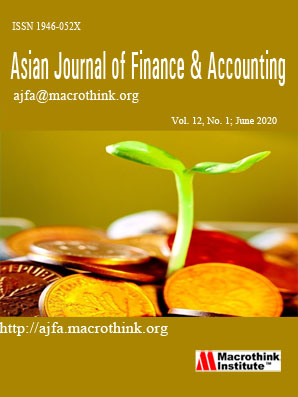Volatility Estimation Using Symmetric and Asymmetric Models in Oil Exporting Emerging Markets
Abstract
The study empirically investigates the volatility pattern of thirteen emerging economies which are predominantly oil exporting countries. It is based on the time series data which consists of monthly closing price data of their index for a ten-year period from 01 January 2008 to 31 December 2017. Emerging markets are considered as investment destinations due to the presence of risk premium which has made the stock markets of these countries more volatile. Added to this is that these countries underwent crisis due to the sharp decline in crude oil prices as they were primarily dependent on oil exports. Hence it is a significant to study the volatility behavior of these countries. The study has been done by employing both symmetric and asymmetric models of generalized autoregressive conditional heteroscedastic. As per Akaike Information Criterion (AIC), Log likelihood and Schwarz Information Criterion (SIC) the study provides evidence that GARCH (1,1) and TGARCH(1,1) estimations are found to be the most appropriate model that fits symmetric and asymmetric volatility respectively for all the thirteen countries. There was evidence of volatility clustering and leptokurtic in all the countries considered in the study. While EGARCH model revealed no support of existence of leverage on the stock returns, TGARCH supported existence of leverage in case of four countries. The tests for asymmetries in volatility indicate the size effect of the news, reaffirmed through the results of sign bias tests and news impact curves, which indicate that the size effect is stronger for bad news than the good news for countries which supported existence of leverage.
Submission of an article implies that the work described has not been published previously (except in the form of an abstract or as part of a published lecture or academic thesis), that it is not under consideration for publication elsewhere, that its publication is approved by all authors and tacitly or explicitly by the responsible authorities where the work was carried out, and that, if accepted, will not be published elsewhere in the same form, in English or in any other language, without the written consent of the Publisher. The Editors reserve the right to edit or otherwise alter all contributions, but authors will receive proofs for approval before publication.
Copyrights for articles published in MTI journals are retained by the authors, with first publication rights granted to the journal. The journal/publisher is not responsible for subsequent uses of the work. It is the author's responsibility to bring an infringement action if so desired by the author.








